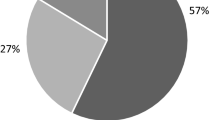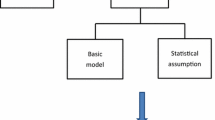Abstract
The S-score is a new performance score applicable to proficiency testing (PT) for binary data. It allows the proficiency test provider to choose how the assigned value (AV) is defined, e.g., positive versus negative, either by the PT provider or by laboratory consensus based on participating laboratories. It is a flexible tool that can be used to select as a maximum four types of proficiency test items (PTIs) depending on the required correct results and expected correct results predefined by the PT provider. Regarding the required correct results, for an easy tasks, e.g., easy analyte detection, correct results matching with the assigned value are required for all PTI1s. For difficult tasks, e.g. close to the limit of detection (LOD) with replicated samples and for mixed tasks with unreplicated, an acceptable range of correct results is required using the binomial probability density from at least six PTI2s. Regarding correct results expected but not required for difficult tasks, results matching with the assigned value are requested by the PT provider for all PTI3s and by a participating laboratory consensus (LC) for all PTI4s. The S-score was designed as a numerical indicator taking into account all the combinations of the different types of PTIs. The decimal part summarizes the laboratory results indicating the rate of incorrect results in relation to the different PTIs assigned values. The integer part provides a similar interpretation to the one of the z-score for quantitative PT, with ‘satisfactory’ (1 ≤ S-score < 2), ‘questionable’ (2 ≤ S-score < 3), and ‘unsatisfactory’ (S-score ≥ 3) performance, respectively.

Similar content being viewed by others
References
ISO/IEC 17043 (2023) Conformity assessment—general requirements for proficiency testing. International Organization for Standardisation (ISO), Geneva, Switzerland
ISO/IEC 13528 (2022) Statistical methods for use in proficiency testing by interlaboraty comparisons. International Organization for Standardisation (ISO), Geneva, Switzerland
Ulhig S, Blaul C, Frost K, Sgorzaly S, Colson B, Simon K (2015) Qualitative PT data analysis with easy-to-interpret scores. Accred Qual Assur 20(5):347–353
Bashkansky E, Turetsky V (2016) Proficiency testing: binary data analysis. Accred Qual Assur 21:265–270
Beavis G, Wilson J, Sykes M (2019) Quantitative scores for binary qualitatif proficiency testing. Accred Qual Assur 24:263–269
Brown LD, Cat TT, DasGupta A (2001) Interval estimation for a binomial proportion. Stat Sci 16(2):101–133
Habtzghi D, Midha CK, Ashish DAS (2014) Modified clopper-pearson confidence interval for binomial proportion. J Stat Theory Appl 13:296–310
Laurencelle L (2017) The exact binomial test between two proportions and its approximations. Quant Method Psychol 13(2):141–147
Clopper CJ, Pearson ES (1934) The use of confidence or fiducial limits illustrated in the case of the binomial. Biometrika 26:404–413
Tiikkainen U, Ciaralli L, Laurent C, Obkircher M, Patriarca RP, Sarkany E (2022) Is harmonisation of performance assessment in non-quantitative proficiency testing possible/necessary? Accred Qual Assur 27:1–8
ISO 22117 (2019) Microbiology of the food chain – Specific requirements and guidance for proficiency testing by interlaboratory comparison. International Organization for Standardisation (ISO), Geneva, Switzerland
Acknowledgements
This work was initiated as part of the revision of the ANSES methodological and statistical Proficiency Testing guide undertaken by an ANSES working group, where this tool was presented and discussed. It was conducted in close collaboration with ANSES PT coordinators. We would like to thank for their active participation Myriam Thomas, Sylvie Hénault, Aurore Romey, and Carine Paraud (animal health); Laetitia Bonifait and Florence Guiller (food microbiology), as well as the members of the ANSES working group: Stéphanie Bougeard, Aude Chabirand, Maud Marsot, Jean-Sébastien Py, Jean-Luc Schereffer, and Catherine De Meredieu. The authors wish to thank Marc Tabouret and Thierry Dupont for the reading and helpful comments.
Author information
Authors and Affiliations
Contributions
1-2-4-5-6 wrote the main manuscript, 1-3-6 Designer of score, 1-3-5-6 developed mathematical approach, 1-2-5-6 prepared figure, all authors participated for tables, and all authors have reviewed the manuscript
Corresponding author
Ethics declarations
Conflict of interest
The authors declare that there are no conflicts of interest.
Additional information
Publisher's Note
Springer Nature remains neutral with regard to jurisdictional claims in published maps and institutional affiliations.
Rights and permissions
Springer Nature or its licensor (e.g. a society or other partner) holds exclusive rights to this article under a publishing agreement with the author(s) or other rightsholder(s); author self-archiving of the accepted manuscript version of this article is solely governed by the terms of such publishing agreement and applicable law.
About this article
Cite this article
Baudry, C., Jadé, G., Rayneau, P. et al. S-score: a new score for binary qualitative proficiency testing schemes interpretable as the z-score. Accred Qual Assur 29, 103–113 (2024). https://doi.org/10.1007/s00769-023-01561-y
Received:
Accepted:
Published:
Issue Date:
DOI: https://doi.org/10.1007/s00769-023-01561-y







